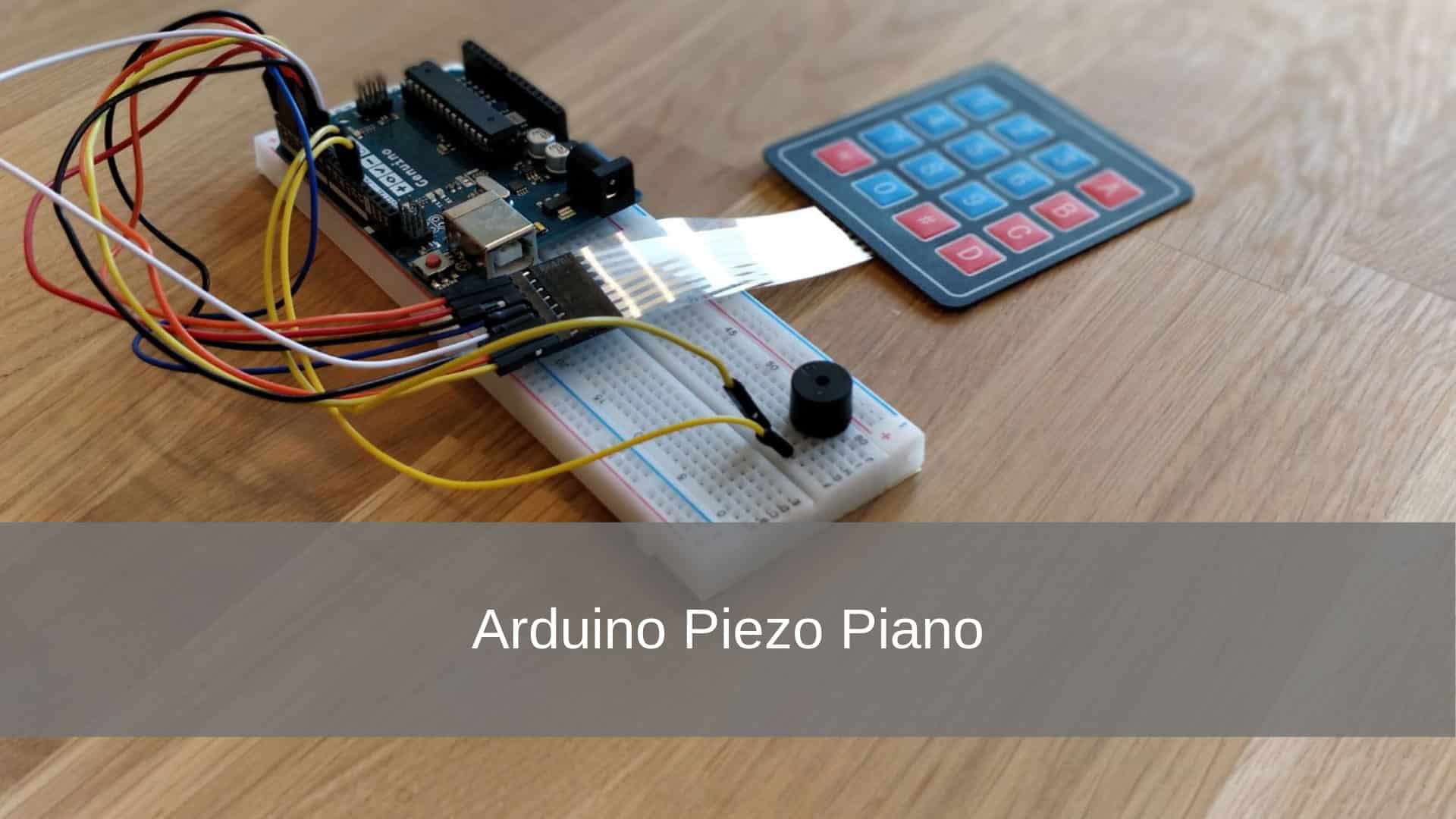

#Arduino piezo bell sound serial#
Serial.println(botao) //Shows the logic state of the input on Serial Monitor Int botao // To save the last logic state of the buttonīotao = digitalRead(pinSwi) //Put the reading value of the switch on botao

PinMode(pinSwi,INPUT) // Defines pinSwi as an input PinMode(pinBuz,OUTPUT) //Defines pinBuz as an Output Serial.begin(9600) // Opens Serial communication Upload the following code to Galileo, using the Arduino IDE or compiling directly from Linux terminal: → The green wire connects the buzzer to Galileo’s Digital 3. → The Orange wire represents the signal received by Galileo when the push-button is pressed → Red wires and black wires referes to VCC 5V and GND, respectively On a Protoboard, assemble the circuit below: Introduction: The buzzer is a electronic device that makes a sound (a buzz) when the crystals in his interior are excited by electic current. Try shaking the sensor to see the voltages go up.Controlling a buzzer with a button Turning a buzzer on by pressing a push-button. The image to the left will take you to a complete guide to making a level crossing. Click On Image To Get Ree Book On Level Crossings. Tutorials on all aspects of a level crossing from code to scratchbuilding gates and flashing lights plus everything in between.
#Arduino piezo bell sound how to#
You should be seeing 0.00's stream by endlessly. How to make a complete model railroad level crossing using an Arduino. Once the circuit is set up and code is uploaded, open your serial monitor, and set the baud rate to 9600 bps. Serial.println(piezoV) // Print the voltage. Read Piezo ADC value in, and convert it to a voltage Check the serial monitor to view the voltage generated. Vibrations on the Piezo sensor create voltags, which are sensed by the Arduino'sĪ0 pin. Connect the other leg of the piezo to A0 Connect a 1Mohm resistor across the Piezo sensor's pins. If this is your first time using Arduino, please review our tutorial on installing the Arduino IDE.If you have not previously installed an Arduino library, please check out our installation guide. Note: This example assumes you are using the latest version of the Arduino IDE on your desktop. We'll stick them and the resistor into a breadboard, then use the jumper wires to connect from breadboard to Arduino. This resistor kit includes multiple 1MΩ's, in case you want to combine a few in series.īreadboard and Jumper Wires - The piezo sensor's legs are spaced by 0.2" and are breadboard compatible. Resistor Kit - To dampen the piezo sensor's AC voltage spikes, a large load resistor - somewhere around 1MΩ - is used.
#Arduino piezo bell sound pro#
Any Arduino-compatible development platform - be it a RedBoard, Pro or Pro Mini - can substitute. Beyond the sensor, the following materials are recommended:Īrduino Uno - We'll be using the Arduino's analog-to-digital converter to read in the voltage produced by the piezo sensor. This tutorial serves as a quick primer on piezo vibration sensors, and demonstrates how to hook them up and use them. Zener diodes can also be used to clamp voltages down to safe levels. Because they produce such high voltages, large resistors are often used to “load down” the piezo sensor in vibration-sensing applications.


Piezo's have the potential to produce very large AC voltage spikes - ranging upwards of ±50V.


 0 kommentar(er)
0 kommentar(er)
